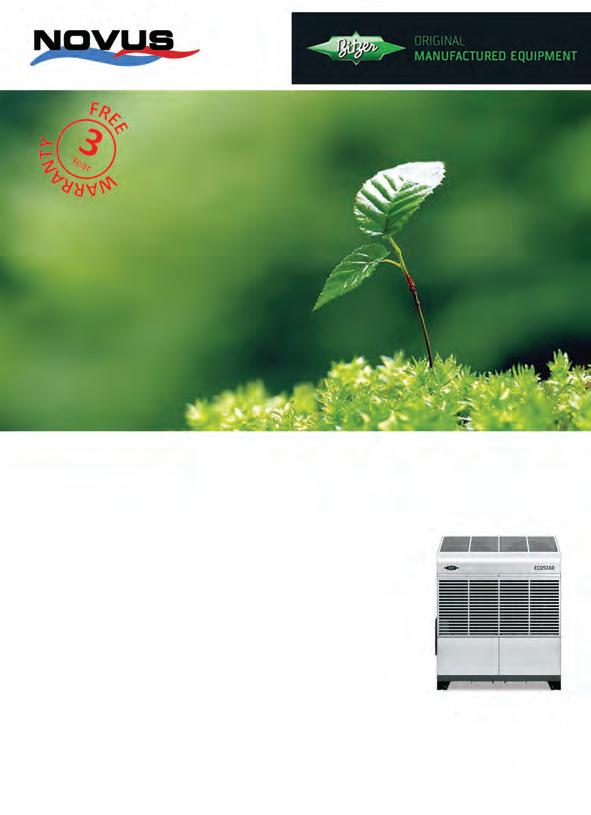
6 minute read
Digitalisation for Sustainability
As the concept of Industry 4.0 gains momentum, adapting to the digital revolution has become near-tantamount in the F&B manufacturing scene. Raimund Klein tells us why.
The global manufacturing landscape has evolved rapidly over the past few years and the sector is experiencing a paradigm shift in both mindsets and processes, particularly with the advent of and push towards ‘Industry 4.0’. Manufacturers now are faced with the prospect of being left behind or worse, going bust, if they fail to adapt to the digital revolution. Needless to say, priorities have changed and an increasing number of enterprises are beginning to realise the importance of embracing digitalization to remain competitive in the global marketplace.
The impact of the evolving manufacturing Raimund Klein landscape cannot be understated, as shown by the results of the 2016 Global Manufacturing Competitiveness Index (GMCI); a multi-year study prepared by Deloitte Touche Tohmatsu Limited, Global Consumer & Industrial Products Industry Group and the Council on Competitiveness. The study revealed that manufacturing is still very much a key driver of global economies, heavily infl uencing infrastructure development, job creation and contribution towards gross domestic product (GDP), paving the way towards economic prosperity. Key markets in Southeast Asia such as Malaysia, Thailand, Indonesia and Vietnam were
highlighted for projected growth, and are expected to break into the top 15 nations on manufacturing competitiveness over the next fi ve years. Singapore, currently ranked 10th on the index, attributes 20 per cent of its GDP to the manufacturing sector. The food and beverage (F&B) industry in particular has been a signifi cant contributor to the growth in manufacturing in Southeast Asia. Global management consulting fi rm L.E.K Consulting reported that the combination of a wealth of new products and the increasing penetration of modern retailing have led to double-digit growth rates for numerous F&B categories across the region. It is plain to see that consumer demand is ripe, and the industry in general is experiencing positive expansion. A large part of the accelerated growth in recent years has been due to technological advancements in the industry. The question then really is, how well are businesses reacting to this growth and what measures are being implemented to ensure that they remain competitive?
Firstly, it is imperative that F&B manufacturers recognise the challenges they face. With increased production requirements, it is crucial that they maintain a consistently high level of product quality, maximum plant availability, optimum resource effi ciency, and, increasingly, the greatest possible fl exibility in order to meet growing individual customer requirements.
F&B manufacturing plants are as complex and complicated as any other plants. There is constant pressure to meet the high requirements of hygiene, quality, HSE, effi ciency and costs. Due to lower margins when compared to other industries, coupled with demand for high quality, each and every tool capable of optimising performance and output must be utilised. Operational excellence is certainly not a new or novel concept in the industry; it has been in play for decades, considering the various technological developments the industry has already deployed – such as automation. Digitalisation is the next logical step in the industry’s evolution as players seek to gain an upper hand amongst competitors.
Unfortunately, due to the various pressure points faced, the F&B manufacturing industry lags behind other industries, such as pharmaceuticals and electronics, when it comes to the implementation of new technologies. Thankfully, that is slowly changing as adoption rates are rising and are expected to catch up


There is constant pressure for F&B manufacturing plants to meet the high requirements of hygiene, quality, HSE, effi ciency and costs.
within the next fi ve to 10 years. As a result, there will be a spike in the use of automation and robotics, which will be strengthened by advantages offered by data collection, analysis and utilisation, as the industry ushers in the digital age.
Digitalisation is a major trend and innovation driver, creating completely new business and growth opportunities for companies. It is fundamentally, though not exclusively, a tool for the collection of large amounts of data available, analysing said data and using the outcomes to optimise the performance of the related facilities and processes. One of the main advantages it brings to adopters is that it is technology that applies to all the processes, operations, equipment and logistics involved. Furthermore, digitalisation offers the manufacturer long-term cost savings opportunities in practically every aspect of the business.
Digitalisation plays a fundamental role in logistics, not only in terms of tracking and establishing provenance and quality, but also in terms of fi ne-tuning the supply chain to reduce storage requirements and eliminate feedstock shortage, which is a major concern when dealing with perishable goods. Furthermore, digitalisation will immensely aid in reducing the time between production completion and product delivery.
All manufacturing plants seek to optimise operations, and this is not easily done – this is where digitalisation shines with great potential. In-depth analysis can offer insight into weak links and underperforming sections of the process, in some cases even discovering obsolete portions. It also enables manufacturers to diminish time-lag between processes and eradicate loss of production time due to kinks in the production line.
Most processes in the food and beverage industry have a high demand for utilities, such as electricity and water. Digitalisation helps manufacturers to use these utilities more effi ciently, enabled through energy and water saving technologies, which not only helps to save money, but in this era of global warming and climate control, it aids in maintaining natural resources with the added benefi t of being a greener operator.
Most critically, digitalisation is not a one-size-fi ts-all solution. It offers solutions that are tailor-made to suit the requirements of each manufacturing plant and its related processes, thus ensuring that factors such as recommended costs and effi ciency are based on the manufacturing capabilities, budgets and bottom lines of each plant.
To draw on all the benefi ts of digitalisation, businesses must fi rst achieve an end-to-end integration of their data. This requires the integration of industrial software and automation, the expansion of communications networks, security in the area of automation and the use of business-specifi c industrial services. These will enable manufacturing companies to achieve faster, more fl exible value-adding processes and so cater more specifi cally to individual customer needs, allowing them to respond far more rapidly to new market demands, and making it easier for them to develop complete new business models.
It is clear that digitalisation is a technological wave that will make the manufacturing industry more effi cient, more productive and more profi table. In the highly competitive climate of the food and beverage industry, it is critical that every advantage be utilised in order to maintain market position and market share. Mastering all the challenges posed today and those which will arise in the future is possible only with digitalisation.
The digital transformation in an industrial context is only just the beginning, and it is about to change our world profoundly.
RAIMUND KLEIN IS THE EXECUTIVE VICE PRESIDENT FOR SIEMENS ASEAN, DIGITAL FACTORY AND PROCESS INDUSTRIES AND DRIVES












